 |
Bush TR130
- United Kingdom - 1965 - description - |
 |
 Description
Description Restoration
& Schematics
Restoration
& Schematics |
 |
 Descrizione
Descrizione Restauro e schemi elettrici
Restauro e schemi elettrici |
|
|
Click sulle immagini per
ingrandire
|
|||
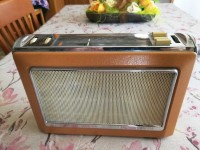 |
 |
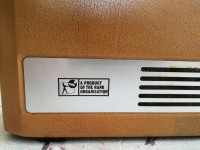 |
 |
 The Bush TR130 (Bush Radio, London - U.K.) was marketed in the United
Kingdom starting in 1965.
The Bush TR130 (Bush Radio, London - U.K.) was marketed in the United
Kingdom starting in 1965.In the mid-1960s, portable transistor radios were sold in large numbers and the various British manufacturers competed to gain customers. Compared to US and Japanese manufacturers, the British manufacturers preferred to make devices of considerable size rather than miniaturized pocket radios, which could be equipped with speakers capable of excellent acoustic performance and used long-lasting batteries. The TR130 was a British radio proposed to the younger public, the teenagers, who at that time listened to rock music and especially beat, a musical genre that had originated in England and had spread throughout the world. One of the most popular European radio stations in the mid-1960s was Radio Luxemburg, which broadcast rock and beat music, news and charts in English on 1440 kHz, or 208 metres of wavelength, with a power of 1300 kWatt in Amplitude Modulated from a location near Marnach, a small town in the municipality of Munshausen in northern Luxembourg. The Luxembourg station was very powerful and could be heard throughout Europe, so much so that the designers at Bush thought it a good idea to equip their new device with a pre-selection button specifically for 208 metres. On the TR130s produced from mid-1966 onwards, for better tuning, a single frequency was preferred to a slice of the widened band (bandspread) that went from 192 to 208 metres. The Bush TR130 was a seven-transistor superheterodyne using the Mullard germanium series: AF117, AF117, AF117, OC71, OC81D, OC81, OC81. The antenna was wound on a ferrite core and the radio received Medium Waves and Long Waves with an Intermediate Frequency of 470 kHz. A large elliptical speaker with an impedance of 15 Ohm by Celestion optimally reproduced the audio signal of the power of 1 W produced by the push-pull of OC81. The cabinet was made of plastic with a top and front grille of chromed metal. Inside there was a metal chassis that supported a large variable capacitor arranged transversally and moved by a cord that ran on a complicated system of rollers and transmissions. The electronic components of the radio were arranged on a printed circuit board and the large battery used was of the PP9 type or equivalent 9 V. The upper part of the cabinet was a chromed metal frame that included the dial and the various controls for tone, volume, tuning and range change. The dimensions were: 235 x 160 x 73 mm (W, H, D) and the weight was 2.1 kg without battery. © IK3HIA 2023. |
|||
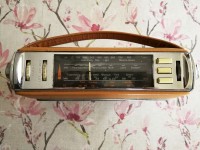 |
 |
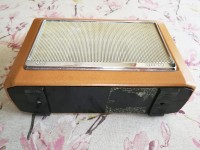 |
 |
|
Back to the top of the page >>
|
|||
 La Bush TR130
(Bush Radio, London - U.K.) fu commercializzata nel Regno Unito a
partire dal 1965.
La Bush TR130
(Bush Radio, London - U.K.) fu commercializzata nel Regno Unito a
partire dal 1965.Nella metà dei '60 le radio portatili a transistor venivano vendute in gran copia e le varie ditte produttrici britanniche facevano a gara per accaparrarsi la clientela. Rispetto ai costruttori USA e giapponesi, le ditte produttrici del Regno Unito anziché radioline miniaturizzate da taschino preferivano realizzare apparecchi dalle dimensioni consistenti le quali potevano essere dotate di altoparlanti capaci di un'ottima resa acustica e utilizzavano batterie dalla lunga durata. La TR130 era apparecchio radio britannico proposto al pubblico più giovane, ai teenager, che in tale periodo ascoltavano la musica rock e soprattutto il beat, genere musicale che era nato in Inghilterra e si era diffuso in tutto il mondo. Una delle stazioni radio che a metà degli anni 60 andava per la maggiore in Europa era Radio Luxemburg, la quale trasmetteva musica rock e beat, notizie e classifiche dei successi musicali in lingua inglese su 1440 Khz, pari a 208 metri di lunghezza d’onda, con una potenza di ben 1300 kWatt in Ampiezza Modulata da una località vicino a Marnach, una piccola città nel comune di Munshausen nel nord del Lussemburgo. La stazione lussemburghese era molto potente e poteva essere ascoltata in tutta Europa, tanto che i progettisti della Bush pensarono bene di dotare il loro nuovo apparecchio di un tasto di preselezione proprio per i 208 metri. Sulle TR130 prodotte dalla metà del 1966 in poi, per una migliore sintonizzazione, alla frequenza singola fu preferita a una fetta di banda allargata (bandspread) che andava dai 192 ai 208 metri. La Bush TR130 era una supereterodina a sette transistor che impiegava la serie al germanio della Mullard: AF117, AF117, AF117, OC71, OC81D, OC81, OC81. L'antenna era avvolta su nucleo di ferrite e la radio riceveva le Onde medie e le Onde Lunghe con Frequenza Intermedia a 470 kHz. Un grosso altoparlante ellittico con impedenza di 15 Ohm della Celestion riproduceva in modo ottimale il segnale audio della potenza di 1 W prodotto dal push-pull di OC81. Il mobiletto era di materiale plastico con parte superiore e griglia frontale di metallo cromato. All'interno trovava posto uno chassis metallico che sosteneva un grosso condensatore variabile disposto in modo trasversale e mosso da un cordino che scorreva su un complicato sistema di rulli e rinvii. I componenti elettronici della radio erano disposti su circuito stampato e la grossa batteria utilizzata era del tipo PP9 o equivalente da 9 V. La parte superiore del mobile era una cornice di metallo cromato che comprendeva la scala parlante e i vari controlli di tono, volume, sintonia e cambio gamma. Le dimensioni erano: 235 x 160 x 73 mm (L, A, P) e il peso di 2.1 kg senza batteria. © IK3HIA 2023. |
|||
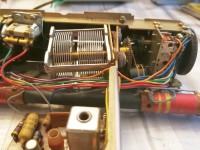 |
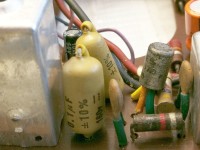 |
 |
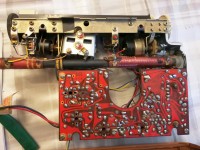 |
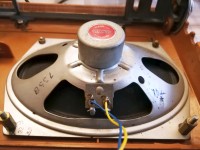 |
 |
 |
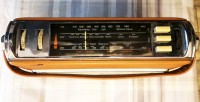 |
|
Back to the top of the page >>
|
|||
|
|
Return to: IK3HIA home page |
|
Return to: Transistor Radio |
|
Go to: Transistor diagrams |